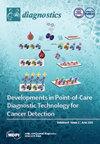慢性复发性多灶性骨髓炎唑来膦酸钠治疗的临床、骨密度和脊柱重构反应。
摘要
背景:慢性复发性多灶性骨髓炎(CRMO)是一种罕见的影响骨骼生长的自身炎症性疾病。标准的一线治疗大剂量非甾体抗炎药(非甾体抗炎药)仅适用于一小部分患者。美国风湿病学会共识指南建议,基于少数报告帕米膦酸盐使用结果的病例系列证据,在特定类别的患者中考虑使用双膦酸盐。目的:本研究的目的是报告双膦酸盐(主要是唑来膦酸盐)在CRMO中的有效性和安全性。方法:2008年1月至2023年9月在一家三级转诊中心对接受双膦酸盐治疗的CRMO患儿进行回顾性队列研究。我们描述了基线特征;双膦酸盐治疗的临床适应证、治疗方案及疗效;双能x线吸收仪(DXA)扫描的骨密度(BMD)变化和脊柱重塑;还有安全数据。结果:在研究期间,发现64例(72%,n = 46名女性)CRMO患者,诊断时中位年龄为10岁(范围:3至16岁)。大约31% (n = 20)的患者接受了帕米膦酸盐(n = 2)或唑来膦酸盐(n = 14)或两者兼有(n = 4)。双膦酸盐使用最常见的适应症是难治性疼痛[55%,n = 11/20],疼痛+脊柱受累[35% (n = 7/20)]和仅脊柱受累[10% (n = 2)]。在双膦酸盐治疗前,100%服用常规非甾体抗炎药(n = 19/19), 21% (n = 4/19)使用阿片类药物,47% (n = 9/19)接受口服类固醇疗程,10% (n = 2/19)接受甲氨蝶呤。双膦酸盐治疗开始时的中位年龄为12岁(范围6-18岁),治疗持续时间为2年(范围6个月至5年)。88%的患者报告疼痛有所改善(n= 15/17, 1例因尚未开始治疗而被排除在外)。所有对双膦酸盐治疗无反应的患者(n = 2/17;)随后被临床确认为疼痛放大综合征,并被转介到慢性疼痛多学科团队。这与阿片类药物(n = 3/3; 1人因尚未开始治疗而被排除在外)、类固醇(n = 8/8)和甲氨蝶呤(n = 2/2)的完全治疗降级相关。44%的患者停用了非甾体抗炎药(16例中有7例;1例因数据缺失而被排除,3例因非甾体抗炎药不耐受而被排除)。LS BMAD(腰椎骨矿物质表观密度)Z-score的中位第一年增加为+1.35,TBLH BMD(全身减去头部骨矿物质密度)Z-score的中位第一年增加为+0.7 (n = 11)。随后,记录了LS BMD Z-score的中位数年平均增长为+0.65,TBLH BMD Z-score的中位数年平均增长为+0.45 (n = 5)。大约30%的患者(n = 6)由于骨密度的快速上升而需要调整治疗(减少剂量、减少频率或停止)。没有因骨密度升高而骨折的记录。38%的脊柱病变患者(n = 3 / 8)在DXA椎体骨折评估中发现了脊柱重塑的证据。没有任何椎平面病变的影像学改善证据。接受双膦酸盐治疗的患者普遍报告了第一阶段反应(发热),但没有明显的需要住院治疗。结论:与帕米膦酸盐类似,唑来膦酸盐具有良好的耐受性和有效的缓解疼痛的给药方案,并能降低CRMO辅助治疗的升级。这是首个追踪CRMO患者服用唑来膦酸钠后骨密度和脊柱重构变化的报告。脊柱重构在椎平面病变中是最小的。强烈建议骨密度监测和个性化的双膦酸盐剂量和方案,以避免过度治疗。Background: Chronic Recurrent Multifocal Osteomyelitis (CRMO) is a rare auto-inflammatory condition affecting the growing skeleton. The standard first-line treatment of high-dose NSAIDs (non-steroidal anti-inflammatory drugs) is adequate only in a subset of patients. The American College of Rheumatology Consensus Guidelines suggest considering bisphosphonates in a certain category of patients based on evidence from a handful of case series reporting the outcome of pamidronate use. Aims: The aim of this study was to report the efficacy and safety of bisphosphonate, predominantly zoledronate, use in CRMO. Methods: A retrospective cohort study of children with CRMO receiving bisphosphonates was conducted between January 2008 and September 2023 at a single tertiary referral centre. We described the baseline characteristics; clinical indication, regimen and response to bisphosphonate treatment; changes in bone mineral density (BMD) and spine remodelling on dual-energy X-ray absorptiometry (DXA) scans; and safety data. Results: During the study period, 64 (72%, n = 46 females) patients with CRMO with a median age at diagnosis of 10 years (range: 3 to 16 years) were identified. Approximately 31% (n = 20) received either pamidronate (n = 2) or zoledronate (n = 14) or both (n = 4) due to changes in local protocols. The most frequent indications for bisphosphonate use were refractory pain [55%, n = 11/20], pain + spine involvement [35% (n = 7/20)] and spine involvement only [10% (n = 2)]. Prior to bisphosphonate therapy, 100% took regular NSAIDs (n = 19/19), 21% (n = 4/19) used opioids, 47% (n = 9/19) received oral steroid courses, and 10% (n = 2/19) received methotrexate. The median age at bisphosphonate treatment initiation was 12 years (range 6-18 years), and the duration of treatment was 2 years (range: 6 months to 5 years). Improvement in pain was reported by 88% of patients (n= 15/17, 1 was excluded as they had not started treatment yet). All non-responders (n = 2/17;) to bisphosphonate therapy were later recognised clinically to have pain amplification syndrome and were referred to the chronic pain multi-disciplinary team. This correlated to the complete treatment de-escalation of opioids (n = 3/3; 1 was excluded as they had not yet started treatment), steroids (n = 8/8) and methotrexate (n = 2/2). NSAIDs were discontinued in 44% of patients (n = 7 of 16; 1 was excluded due to missing data, and 3 were excluded due to NSAID intolerance). The median first-year increase in the LS BMAD (lumbar spine bone mineral apparent density) Z-score was +1.35, and that in the TBLH BMD (total body less head bone mineral density) Z-score was +0.7 (n = 11). Subsequently, median average annual increases in the LS BMAD Z-score of +0.65 and in the TBLH BMD Z-score of +0.45 (n = 5) were recorded. Around 30% of patients (n = 6) required treatment modification (dose reduction, frequency reduction or cessation) due to a rapid escalation in BMD. There were no fractures documented due to raised BMD. Evidence of spine remodelling on DXA vertebral fracture assessment was seen in 38% of patients with spinal lesions (n = 3 of 8). There was no radiological evidence of improvement in any vertebra plana lesion. First-phase reactions (pyrexia) were reported universally in patients who received bisphosphonates, but none were significant requiring hospitalisation. Conclusions: Similar to pamidronate, zoledronate with an advantageous dosing regimen is well tolerated and effective in improving pain and enabling the de-escalation of adjunctive therapy in CRMO. This is the first report tracking changes in BMD and spinal remodelling in response to zoledronate in CRMO patients. Spinal remodelling is minimal in vertebra plana lesions. Bone density monitoring and personalisation of the bisphosphonate dose and regimen are strongly recommended to avoid overtreatment.

 求助内容:
求助内容: 应助结果提醒方式:
应助结果提醒方式:


